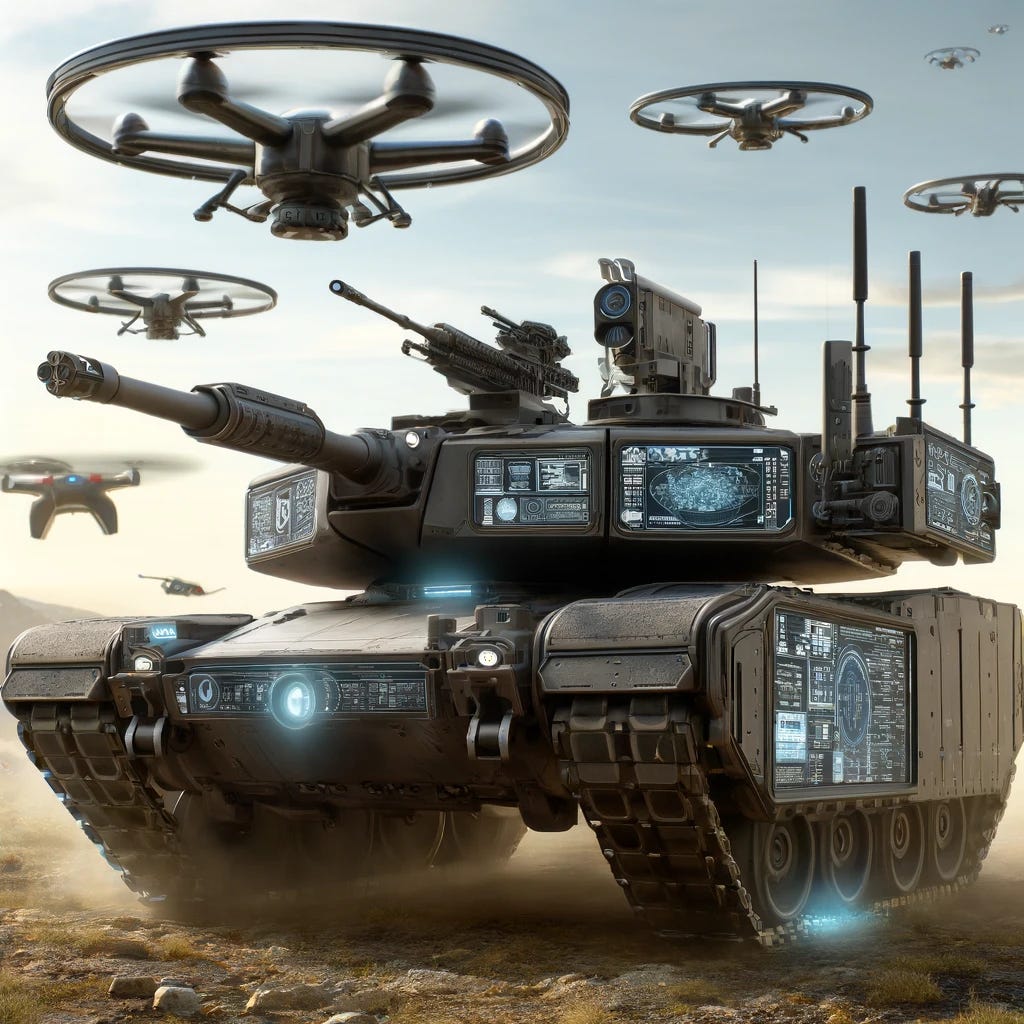Signal of Change: AI-Powered Smart Tanks in Modern Warfare
Integrating Anti-Drone Technology with Traditional Armored Systems
The article "China's Futuristic Smart Tank Can Turn Drones Against Drones, Leaked Images Suggest" discusses China's development of a futuristic smart tank designed to counter drone threats. Leaked images and reports suggest that this advanced tank has the capability to turn drones against each other, showcasing a shift from traditional tank warfare to more technologically sophisticated combat strategies.
Signal Description
China's development of a futuristic smart tank that can commandeer enemy drones represents a significant evolution in military technology. This innovation combines AI, electronic warfare, and traditional armored capabilities, creating a versatile and formidable tool on the battlefield. The smart tank's ability to turn adversaries' drones against them highlights a strategic shift towards leveraging AI and cyber capabilities in military operations.
Signs
Leaked Images and Media Reports: Recent images circulating on social media show a prototype of the smart tank, suggesting that the technology is in an advanced stage of development.
Integration with Existing Systems: The smart tank likely incorporates technology from China's existing anti-drone systems, such as those showcased at the Zhuhai air show, which feature AI and missile technology designed to intercept UAVs.
Focus on AI and Electronic Warfare: The integration of AI in military hardware is part of China's broader strategy to enhance its defence capabilities through advanced technology.
Potential Timeline of Transformation in Warfare
Present (2024)
Prototype Testing and Demonstration: The smart tank, equipped with AI systems that can hijack and repurpose enemy drones, undergoes testing and demonstration phases. This highlights China's advancements in integrating AI into military hardware.
Initial Deployment: Limited deployment within Chinese military units to refine the technology and develop operational doctrines for integrating smart tanks into existing forces.
Near Future (2025-2027)
Operational Integration: AI-powered smart tanks become an integral part of military units. These tanks work in conjunction with drones, both friendly and hijacked, to create a dynamic and adaptive battlefield environment.
Shift in Combat Tactics: Military strategies evolve to leverage the capabilities of AI and electronic warfare. Combat tactics now include coordinated drone swarms, autonomous reconnaissance, and precision strikes using hijacked enemy drones.
International Adoption: Other nations recognize the strategic advantages of AI-powered drone warfare and begin developing similar technologies, leading to an arms race in AI and electronic warfare.
Mid-Term Future (2028-2030)
Advanced Autonomous Systems: AI systems in smart tanks and drones reach higher levels of autonomy, enabling them to conduct complex operations with minimal human intervention. These systems can autonomously identify, assess, and engage targets, including enemy drones.
Networked Warfare: The battlefield becomes highly networked, with smart tanks, drones, and other autonomous systems sharing real-time data to enhance situational awareness and coordination. This networked approach allows for rapid adaptation to changing combat scenarios.
Counter-AI Measures: Adversaries develop sophisticated countermeasures, including AI-driven defense systems designed to protect drones from hijacking and to neutralize enemy AI capabilities.
Long-Term Future (2031-2040)
Dominance of Autonomous Combat: Fully autonomous warfare becomes prevalent, with AI-driven tanks and drones conducting operations independently. Human oversight is limited to strategic decision-making and high-level command roles.
Ethical and Legal Frameworks: International agreements and regulations are established to govern the use of autonomous weapons, addressing concerns about accountability, ethics, and the rules of engagement.
Civilian Applications: Technologies developed for military AI and autonomous systems find applications in civilian sectors, such as disaster response, infrastructure monitoring, and automated logistics, demonstrating the dual-use potential of these innovations.
The introduction of AI-powered smart tanks capable of hijacking enemy drones represents a transformative shift in modern warfare. This evolution towards technologically sophisticated combat strategies has profound implications for military tactics, international security, and ethical governance.


